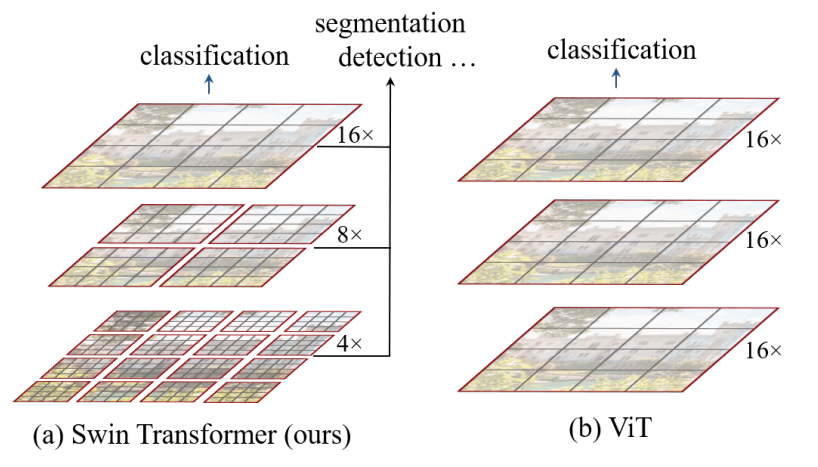Swin Base Patch4 Window7 224
Swin Transformerは、移動ウィンドウに基づく階層型ビジュアルTransformerで、画像分類タスクに適しています。
ダウンロード数 281.49k
リリース時間 : 3/2/2022
モデル概要
このモデルは、ImageNet - 1kデータセットで224x224の解像度で訓練され、階層型特徴マップと局所ウィンドウ自己アテンション機構を採用しており、計算複雑度は入力画像のサイズに対して線形関係にあります。
モデル特徴
階層型特徴マップ
画像パッチを結合して階層型特徴マップを構築し、さまざまなスケールのビジュアルタスクに適しています。
局所ウィンドウ自己アテンション
局所ウィンドウ内でのみ自己アテンションを計算し、計算複雑度は入力画像のサイズに対して線形関係にあります。
汎用バックボーンネットワーク
画像分類と密集認識タスクの汎用バックボーンネットワークとして使用できます。
モデル能力
画像分類
ビジュアル特徴抽出
使用事例
コンピュータビジョン
画像分類
画像をImageNetの1,000のカテゴリの1つに分類します。
おすすめAIモデル
Llama 3 Typhoon V1.5x 8b Instruct
タイ語専用に設計された80億パラメータの命令モデルで、GPT-3.5-turboに匹敵する性能を持ち、アプリケーションシナリオ、検索拡張生成、制限付き生成、推論タスクを最適化
大規模言語モデル Transformers 複数言語対応
Transformers 複数言語対応
 Transformers 複数言語対応
Transformers 複数言語対応L
scb10x
3,269
16
Cadet Tiny
Openrail
Cadet-TinyはSODAデータセットでトレーニングされた超小型対話モデルで、エッジデバイス推論向けに設計されており、体積はCosmo-3Bモデルの約2%です。
対話システム Transformers 英語
Transformers 英語
 Transformers 英語
Transformers 英語C
ToddGoldfarb
2,691
6
Roberta Base Chinese Extractive Qa
RoBERTaアーキテクチャに基づく中国語抽出型QAモデルで、与えられたテキストから回答を抽出するタスクに適しています。
質問応答システム 中国語
R
uer
2,694
98
